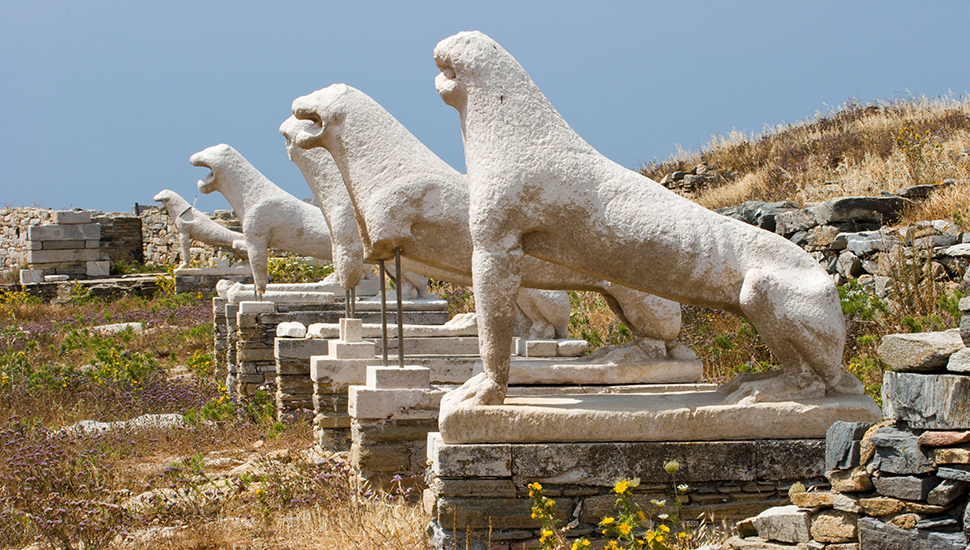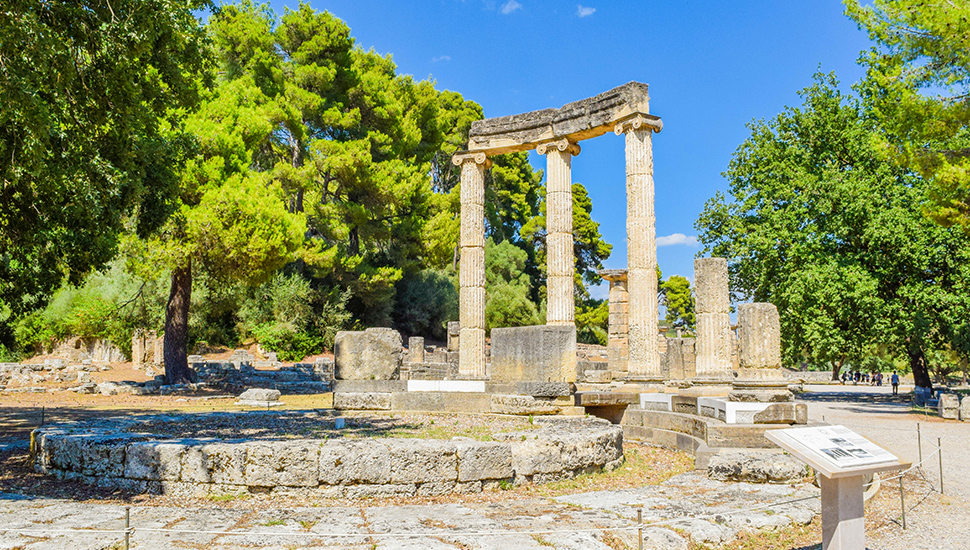Greek Ruins: The Athens Acropolis - and Beyond
A quick guide to visiting the Acropolis and other key Athens ruins; and some of the must-visit ancient attractions around Greece.
Acropolis, Athens
If you only have time to visit one ancient site while visiting Athens, make sure it's the Acropolis!
In times of peace, the Acropolis (or 'high city') was a place where citizens worshipped. But in times of war, it was where people took refuge.
'Acropolis' is the name given to the entire hill, while the Parthenon is the name of the famous temple on the top of the hill.
Aside from the Parthenon, there are other temples and structures on the hill, namely the Propylaea, the Erechtheion, the Theatre of Dionysus, and the Herodion.
For a single ticket you can access all these structures. It costs 25 euros per person, and should be booked online beforehand. if you choose to buy a ticket at the entrance you could be waiting for a very long time to get in!
Planning to explore other sites while visiting Athens? If so, buy the Combo Ticket, which costs 35 euros and grants you entry to several other attractions, including Hadrian’s Library, the Roman Agora and the Ancient Agora. The Combo Ticket is valid for five days.
If you want to have a detailed understanding of Acropolis' history, consider hiring a guide. But if you simply want to breeze through and admire the famous sights, then a guide might be less appealing.
Avoid the crowds by visiting early (8-9am) or late (5-6pm). This way you'll avoid both the crowds and the searing Athenian heat (if visiting in summer).
Hadrian’s Library, Athens
Hadrian’s Library was a cultural centre with lecture theatre and beautiful gardens, and was gifted by Hadrian to the people of Athens.
Proving that the Acropolis is not the only amazing ancient site in Athens, the ruins of Hadrian’s Library speak of how impressive this complex would have been in its day.
While several fallen columns remain, this site once boasted more than 100 marble columns. It’s one of the lesser-known ancient Greek ruins, but well worth your time (allow around 2 hours) You can enter this site on the Combo ticket (35 euros).
The Ancient Agora
To the northwest of the Acropolis lies the Ancient Agora of Athens - the best-preserved example of an ancient Greek agora.
This was a centre of political, commercial and administrative activity in Athens, and was where Socrates expounded his ideas. It was also where Saint Paul came in 29 AD to convert Athenians to Christianity.
These fascinating ancient Greek ruins feature a Byzantine church, the grand Temple of Hephaestus and an interesting museum.
Again, this site is accessible with the Combo ticket (35 euros).
Delos
Explore the ruins of once-great Delos - a port city that rivalled Olympia, Athens and Delphi in its importance.
The island of Delos was of great importance in ancient Greece. Great temples were built here, worshipping the twin gods Apollo and Artemis.
Many centuries before Christ, Delos drew pilgrims from across the western world.
Delos was important in three different eras, for different reasons: firstly as a religious site; then, later as the treasury of the Athenian League - a sort of ancient Bank of England.
And later still, Delos became one of the busiest and most important commercial ports in the Mediterranean.
At its peak, Delos was comparable to Olympia, Athens and Delphi.
It's difficult not to be impressed by the remnants of the ancient harbour at Delos, with the foundations of shops and homes still visible. The hillsides, meanwhile, are littered with temple remains.
Among the most famous sights is the row of Sphinx-like lions. They may be worn by wind and rain, but they serve as a reminder of just how great Delos was.
One can imagine strolling among the 3000+ shops - where you could buy almost anything; or visiting one of the incredibly ornate mansions owned by one of the many wealthy merchants.
Epidavros
Explore the Sanctuary at Epidaurus - with the best-preserved theatre in the ancient world.
While Epidavros' amphitheatre is superbly preserved, its surrounding city is not. However, the fragments that remain are still well worth exploring.
Back in 400 BC, Epidavros was a vast complex of hospitals and sick wards, and the go-to place to get well in the ancient Greek world.
Here, doctor priests - doing the work of Asklepios - undertook their miraculous healing.
But the real highlight of a trip here is the theatre, which laid on entertainment for the thousands of people who made the pilgrimage here from across Greece and further afield.
The theatre functioned up until 426AD, when it was shut down by the Christian emperor Theodosius II - who regarded it as a Pagan sanctuary.
The acoustics of this 12,000-seater theatre are impressive to this day - as you'll discover if you stand in the centre of the stage and recite your favourite Marcus Aurelius quotes!
The Sanctuary of Olympia
Visit the birthplace of the Olympic Games, deep in the mythical Peloponnese.
The rugged Peloponnese Mountains were considered by ancient Greeks to be a wild and frightening land - filled with mythical creatures.
This is where Hercules underwent many of his labours - and it was where Olympians were tested. Today, the birthplace of the Olympic games is an evocative place, where the Olympic ruins lie scattered under shady trees.
As you explore this vast sight you'll quickly understand how large and important Olympia was - and not just for sporting trials.
While it was known as the Sanctuary of Olympia, it was primarily a religious place, packed with many temples. The public could only visit these temples during the Games - a rule that was enforced for more than 1,000 years.
The entire complex was dedicated to Zeus - the god of gods. Back in the 5th century BC the Temple of Zeus was a truly mighty structure - and you can still get a sense of this as you explore the fragments of its remains.
The temple contained a huge statue of Zeus made of gold and ivory - once considered one of the Seven Wonders of the Ancient World.
A series of Earthquakes eventually saw the columns of Olympia fall.
The final Games took place here in 393 AD, and didn't resume for another 1,500 years!
Get a Quote




